High Cholesterol
The right diagnosis helped Ally finally get the
upper hand on her high cholesterol.
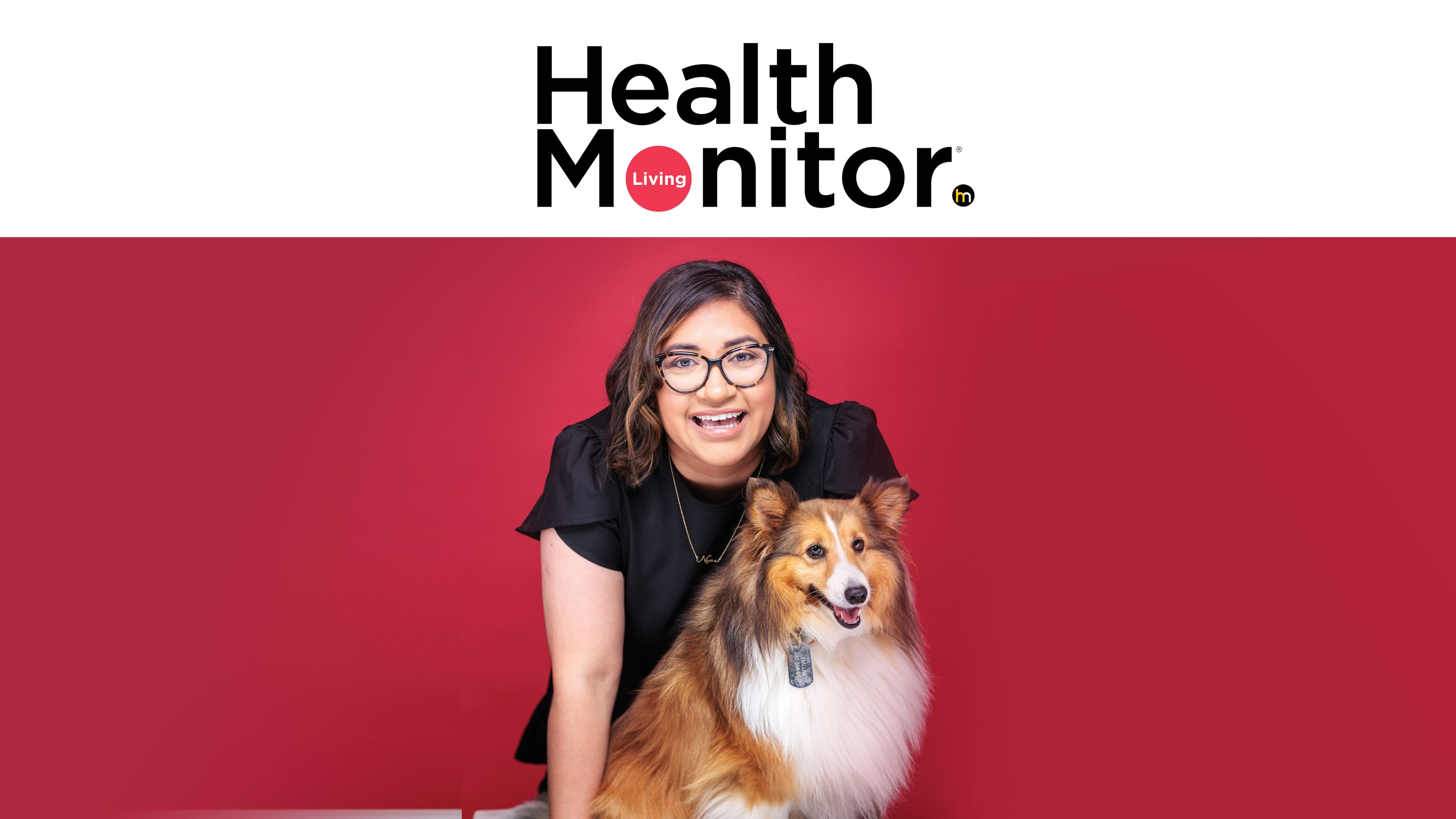
CONTENTS
Health Monitor Living Cholesterol
THE BASICS
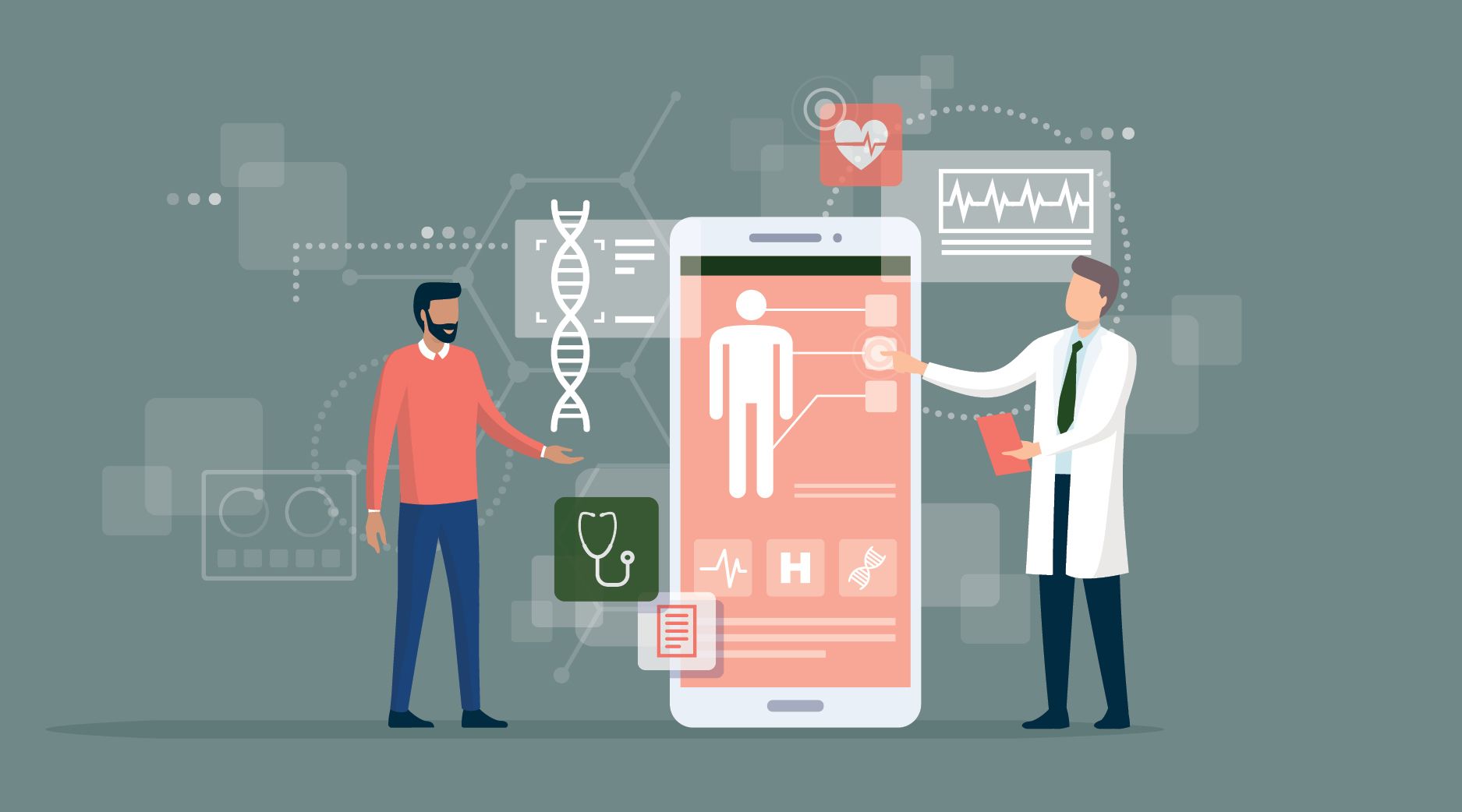
Cholesterol: what it is and why it’s important to know your numbers
You may already know there’s good cholesterol (also called high density lipoprotein, or HDL) and then there’s, well, the bad stuff (a.k.a., low density lipoprotein, or LDL). But how do you get more of the good stuff and less of the bad? Read on to find out!

How to bring your cholesterol into line—and gain peace of mind!
While it’s true you can’t control certain risk factors that raise cholesterol—like age and family history—there’s still a lot you can do to manage high numbers. Here, the medication options and lifestyle changes that can put your heart health in a better place.
TRUE INSPIRATION

“Our cholesterol is finally under control!”
Ally, Kendel and Damon share the healthy habits that are helping to lower their levels, as well as improve their overall well-being!
YOUR CARE TEAM

What is familial hypercholesterolemia?
Michael J. Blaha, MD, has the answers to your top questions about inherited high cholesterol.
FEEL YOUR BEST
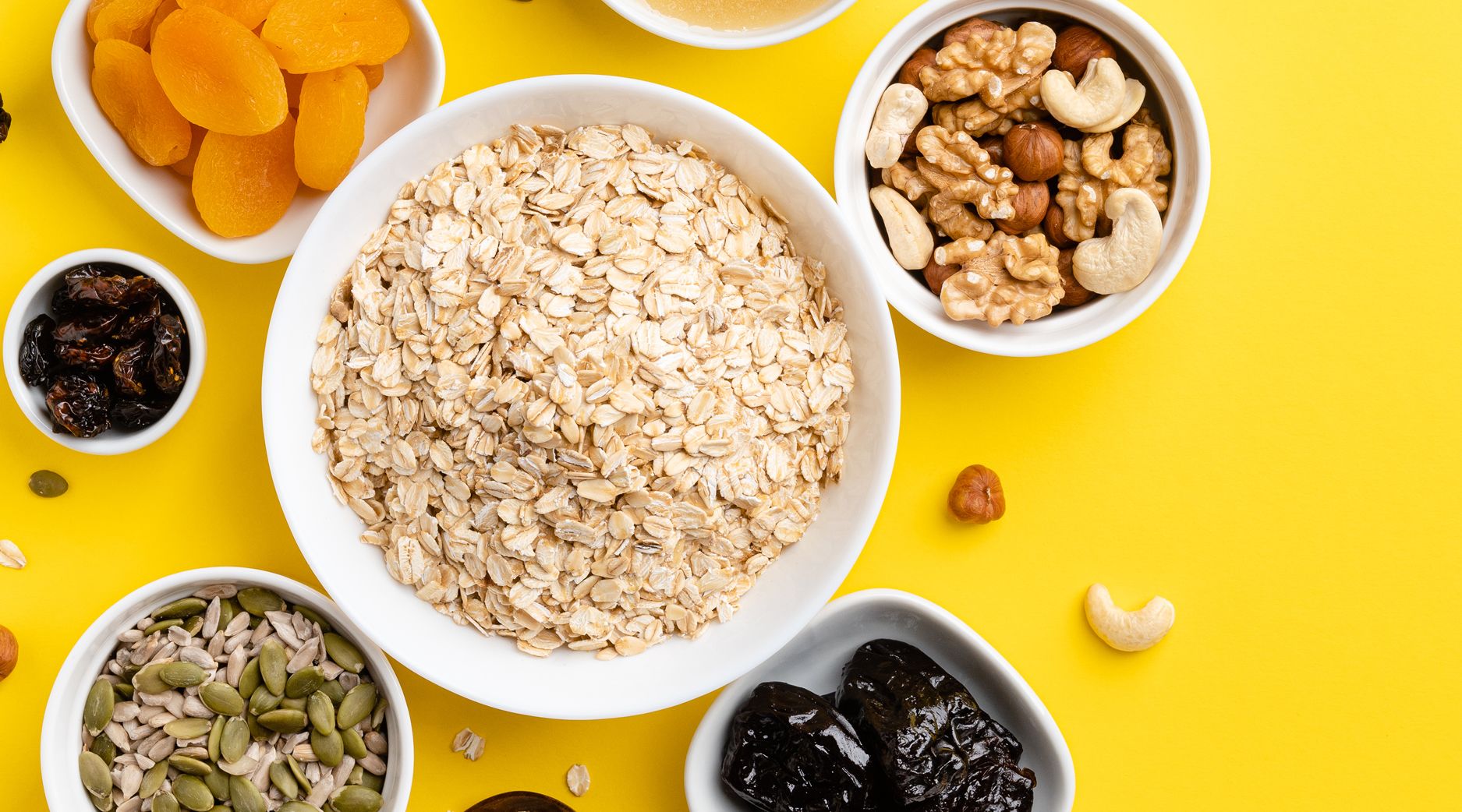
Be a pantry whiz!
Stock your fridge, pantry and freezer with a few essentials and you’ll never be at a loss for a tasty, heart-friendly snack or meal! To help you prep, we’ve compiled a grocery shopping list filled with healthy foods.

Get your moves on—for next to nothing!
The good news is you don’t need to leave home, spend big bucks or buy special gear to work out! Check out these apps (and more) to find the fitness routine that suits your fancy. And don’t forget to clear any new exercise routine with your healthcare provider.
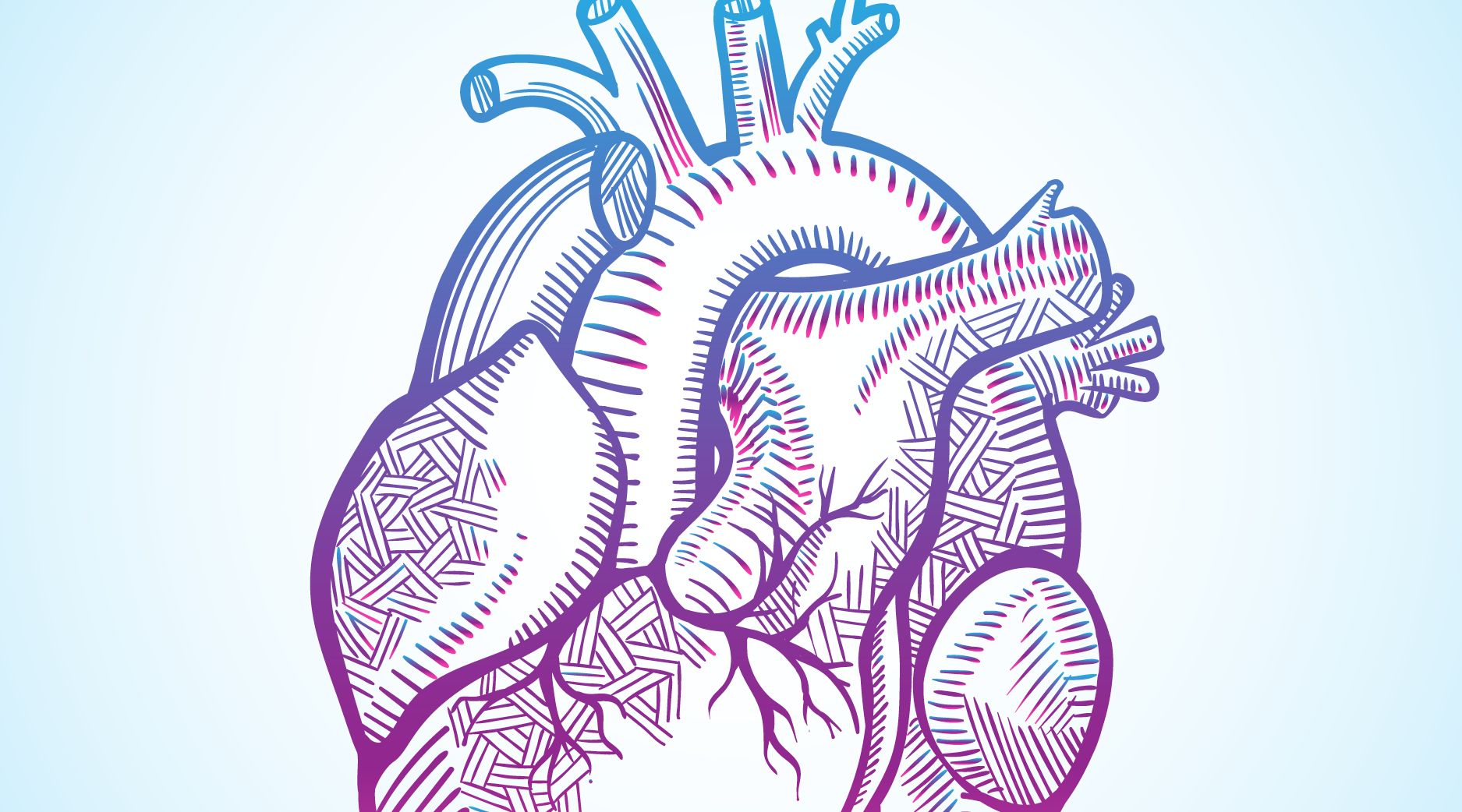
Quiz: How’s your heart health?
Take this quiz to find out how different factors like your family history and lifestyle choices may be impacting you.
Cholesterol:
what it is and why it’s important to know your numbers

You may already know there’s good cholesterol (also called high density lipoprotein, or HDL) and then there’s, well, the bad stuff (a.k.a., low density lipoprotein, or LDL). But how do you get more of the good stuff and less of the bad? Does it all come down to just diet and exercise? And what’s so bad about having too much of the bad stuff anyway? Read on to learn more.
Why we need cholesterol
A waxy substance, cholesterol is made mostly in the liver and plays a vital role in the manufacture of cells, hormones and vitamin D, among other functions. The trick is, your body actually makes all the cholesterol it needs, so any extra you get through your diet is just that—extra.
The two main types of lipoproteins
Cholesterol travels through the bloodstream in fatty packages called lipoproteins, which come in two different types.
• LDL (low-density lipoprotein). This is known as the “bad” cholesterol because if you have too much of it, it builds up on artery walls, causing them to get stiff and narrow. Over time, this can impair blood flow—a condition known as atherosclerosis. When plaque affects the arteries supplying blood to the heart, it can lead to coronary artery disease (CAD) and over time can trigger a heart attack, stroke, heart failure, peripheral artery disease and more.
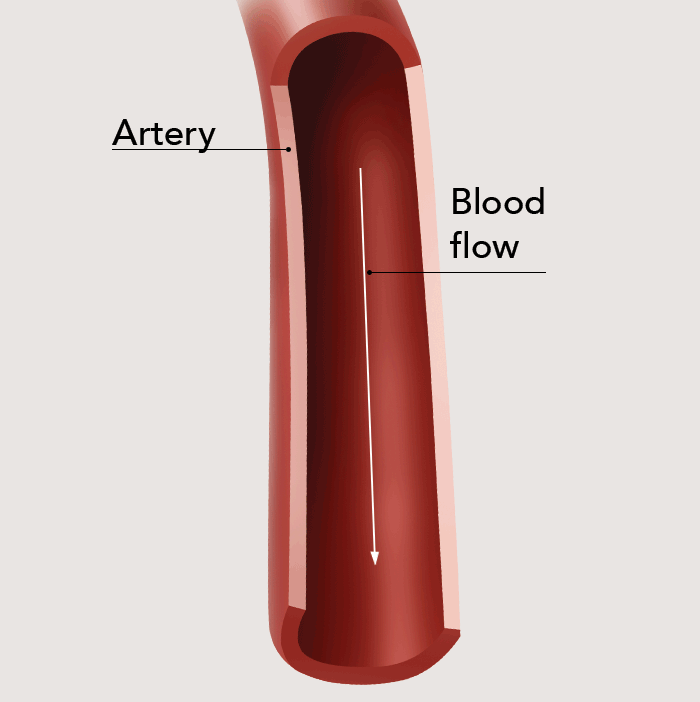
Too much LDL cholesterol can lead to plaque buildup (called atherosclerosis), narrowing the arteries and reducing blood flow.
Source: American College of Cardiology (cardiosmart.org)
• HDL (high-density lipoprotein). This type is known as the “good” cholesterol because it actually helps the liver flush excess cholesterol from the body. Low HDL is associated with an increased risk for heart disease.
Cholesterol by the numbers
|
Total cholesterol |
|
|---|---|
|
Less than 200 mg/dL |
Desirable |
|
200-239 mg/dL |
Borderline high |
|
240 mg/dL and above |
High |
|
LDL cholesterol |
|
|---|---|
|
Less than 100 mg/dL |
Optimal |
|
100-129 mg/dL |
Near optimal/above optimal |
|
130-159 mg/dL |
Borderline high |
|
160-189 mg/dL |
High |
|
190 mg/dL and above |
Very high |
|
HDL cholesterol |
|
|---|---|
|
Less than 40 mg/dL |
Major heart disease risk factor |
|
60 mg/dL and above |
Gives some protection against heart disease |
Who is at risk
Non-preventable risk factors
There are certain factors that raise cholesterol levels that are simply beyond your control. For example:
- Family history: Some people are born with a genetic predisposition to high cholesterol called familial hypercholesterolemia (FH), which causes high LDL levels starting at a young age. The risk of high cholesterol increases for people with a father or brother who had high cholesterol or heart disease before age 55, or a mother or sister who had heart disease before age 65.
- Age and sex: The older you are, the more at risk you are for high cholesterol, in particular men over 50 and women past menopause.
Preventable risk factors
Be sure to discuss the following risk factors with your doctor—they’re all within your control:
- Diet: Bad LDLs can come from too much saturated fat, found mostly in meat and animal products; trans fats, found in many processed and storebought baked foods; and dietary cholesterol, found mainly in animal products.
- Weight: A BMI of 30 or greater can raise your cholesterol.
- Exercise: Lack of movement can decrease good HDLs.
- Smoking: Research suggests that smoking can damage arteries and lower good HDLs.
What you can do
High cholesterol has no symptoms, so the only way to learn if you have it is by getting a blood test, which you should do every four to six years (or more frequently, if directed by your healthcare provider). Luckily, even if your numbers are high, there are ways to get them down, including medications and lifestyle changes. You can learn more about these in the next story.
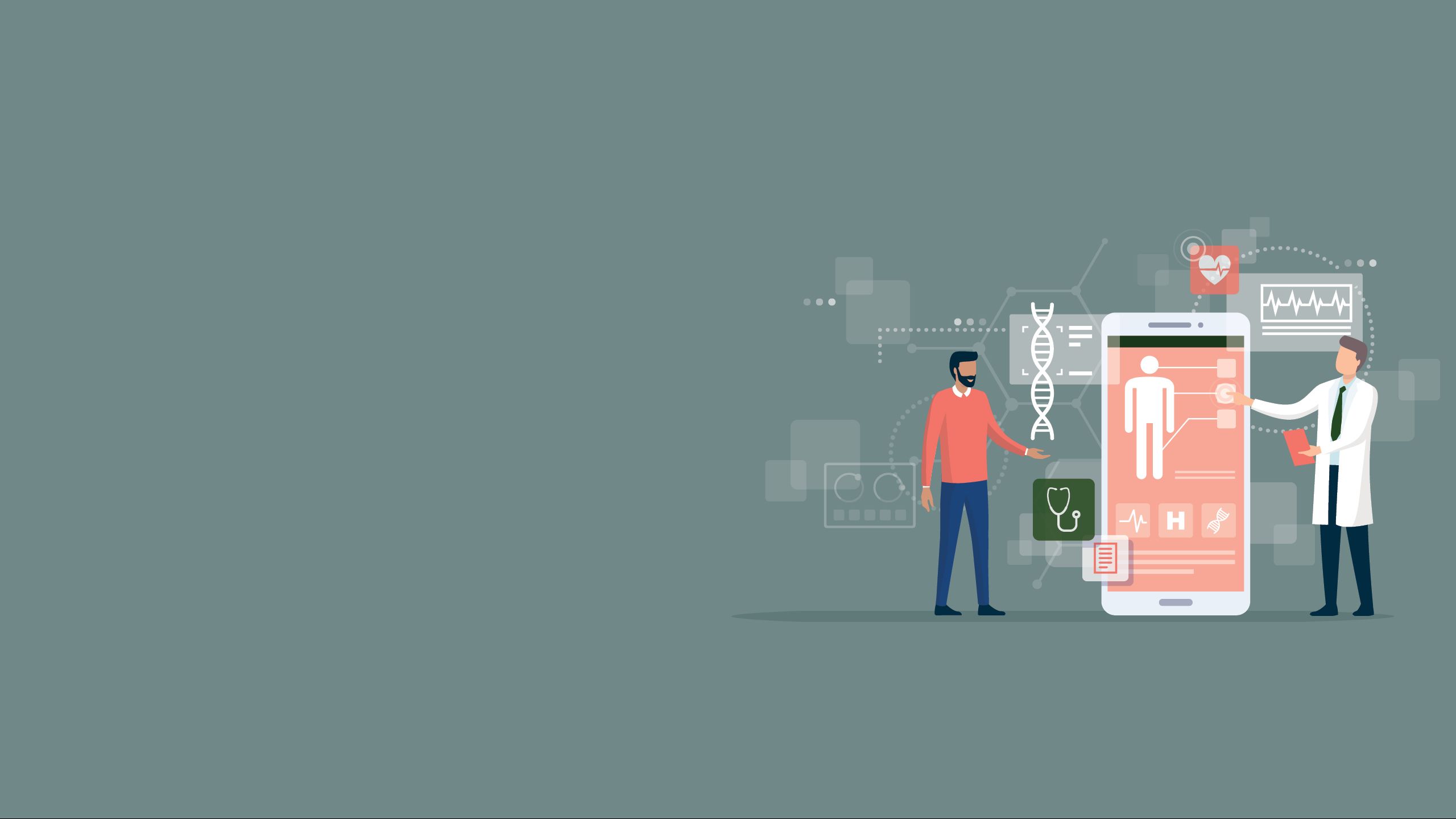
How to bring your
cholesterol into line
—and gain peace of mind!

While it’s true you can’t control certain risk factors that raise cholesterol—like age and family history—there’s still a lot you can do to manage high numbers. Here, the medication options and lifestyle changes that can put your heart health in a better place.
Learn more about your medication options
First-line treatments
Not only are these drugs highly effective, but they have the least amount of side effects.
Statins: These oral medications help decrease the liver’s production of cholesterol, thereby lowering levels of LDL (“bad”) cholesterol and trigylcerides, another type of blood fat. If a statin isn’t doing the trick—sometimes, LDLs can be especially stubborn—your healthcare provider may suggest adding on other medications.

Add-on treatments
These treatments are given in addition to your first-line treatment to enhance its effectiveness.
Ezetimibe: This oral drug prevents your intestines from absorbing cholesterol from the food you eat and even the cholesterol made by the body itself.
PCSK9 inhibitors: Self-injected every two to four weeks, these drugs inactivate a protein that triggers production of LDLs; they’re especially useful in people with a genetic predisposition to high cholesterol and those with heart disease.
MTP inhibitors: These oral medications inactivate a protein that triggers production of LDLs; they’re especially useful in people with a genetic predisposition to high cholesterol.
Bempedoic acid: The newest class of cholesterol-lowering drugs, this oral medication blocks an enzyme in the liver that helps produce cholesterol; it’s especially useful in people with a genetic predisposition to high cholesterol or those with heart disease.
Bile acid sequestrants: These oral medications cause the liver to increase bile, resulting in less cholesterol in the bloodstream.
Icosapent ethyl (prescription): These oral medications—essentially prescription-strength omega-3 fatty acids—help lower triglycerides and keep levels under control; they have been found to reduce the risk of heart attack or stroke in certain high-risk people with triglyceride levels of 150 mg/dL or higher. Note: Over-the-counter omega-3 supplements will not have the same effect as the prescription versions, and can interact with other medications. Always let your healthcare team know about any supplements or OTC medications you’re taking.
Fibrates: These oral medications help lower triglycerides in certain people with triglyceride levels of 500 mg/dL or higher.
Lifestyle changes you can make today
Eating plan: Aim for a diet low in saturated and trans fats, which are typically found in animal products and processed and storebought baked goods. Aim for more low-fat, high-fiber foods, such as whole grains, lean protein and fruits and vegetables. Find more nutrition tips here
Physical activity: Aim for 150 minutes a week of moderate exercise, such as walking, dancing, weight training, etc.
Find more exercise tips here
Healthy weight: Carrying extra pounds is linked to high cholesterol. However, losing just 5% to 10% of your weight can improve your levels—that’s just 10 lbs if you weigh 200.
Quitting smoking: Research suggests that smoking can lower HDL levels and damage arteries. If you need help quitting, try calling the National Quitline at 1-800-QUITNOW or visiting Smokefree.gov
“Our cholesterol
is finally under control!”

Ally, Kendel and Damon share the healthy habits that are helping to lower their levels, as well as improve their overall well-being!
“Treating my genetic condition
made all the difference!”
____________________
Alejandra (Ally) Lavalley
Houston, TX
Back in 2014, Ally had started her first year of graduate school. Along with adapting to a new and rigorous schedule, she was also doing her best to keep her cholesterol levels in check. “I was going to the gym with my cousin and taking steps to live healthily, but my numbers were telling a different story.”

Photo by Laurie Perez
Photo by Laurie Perez
Two years later, as fate would have it, she began an internship at the Texas Heart Institute and began to see first-hand the toll that heart disease had on people.
“I was proud to be working there as a small part in the future of treating heart disease, but it was a constant reminder of where my uncontrolled cholesterol levels could lead.”
Ally was put on a combination of statins in 2018, but they barely improved her numbers. Everything finally changed in 2020 when she consulted with a former colleague from the Institute, who diagnosed her with familial hypercholesterolemia, a genetic disorder in which the body can’t eliminate LDL (low-density lipoprotein, aka “bad”) cholesterol from the blood. “It made sense now why the healthy life choices and statins weren’t helping—familial hypercholesterolemia needs to be treated differently than other causes of high cholesterol. And before my diagnosis I had no way of knowing my condition could be genetic—I was adopted from Mexico as an infant and had no knowledge of any family medical history.”
With her new diagnosis, she was prescribed a PCSK-9 inhibitor, a type of cholesterol-lowering medication that decreases LDL levels and can be especially helpful for people with familial hypercholesterolemia. “And for the first time in my life, my numbers went down to a safe level!”
These days, her numbers under control, Ally is still prioritizing a heart-healthy lifestyle, including long walks with her pup Astro, and looking forward to many healthy, active years ahead.

Photo by Laurie Perez
Photo by Laurie Perez
Ally’s top heart-healthy tips:
Change your perspective
Do yourself a favor and refrain from labeling any “bothersome” lifestyle adjustments as punishments. “For example, instead of complaining about needing to eat more vegetables, I reframe it as having the opportunity to try new recipes,” says Ally. “I’m also setting a positive example of strength and perseverance for my daughter, Neve. She'll grow up seeing that while I have this condition, it doesn't keep me from doing the things I love, such as traveling, attending concerts and signing up for the occasional 5K.”
Build your own medical team
According to the American Heart Association, chronic stress has been shown to be associated with increased cardiovascular events, which is why Ally makes it a point to schedule fun and/or relaxing activities, like getting her hair colored at the salon. “Anything that allows you time to unwind and clear your head will work,” she says. “Having these moments, in addition to experiencing the overwhelming joy of our new baby, helps me see the bigger picture and realize that stress is but a drop in the well of this beautiful life.”
Connect with others
Ally, who can be found on Instagram at @allylavalley88, emphasizes the importance of joining a support group. “I was lucky to find the FH Foundation (formerly Familial Hypercholesterolemia, but now the Family Heart Foundation) that was filled with people living with the same cholesterol condition as me,” she states. “We each have different treatment plans, but having a place to turn to for opinions and advice has been really helpful.”

Photo by Heather DelPrincipe
Photo by Heather DelPrincipe
“A heart attack turned my life around!”
____________________
Kendel Christoff
Hubbard, OH
Ten years ago, at the age of 32, Kendel had been living with high cholesterol levels for nearly half her life, yet was told she didn’t need to be too concerned about it until she reached her 40s. Then, one night she woke up nauseated and drenched in sweat and assumed she’d caught a bug—but once she noticed she also had jaw pain and tingly fingertips, the married mother of two recalled that her mother, grandmother and great-grandmother had experienced the same symptoms when they were suffering a heart attack.
A trip to the ER saved Kendel’s life: Her right coronary artery was 100% blocked, which required a stent. Two days later, a second stent was inserted into another artery that was nearly 80% blocked, followed by a third stent seven months post-heart attack. Yet in order not to follow in her family’s footsteps (her grandmother died at the age of 54), Kendel knew she had to do more to protect her heart from another attack, and completely overhauled her way of living.
Today, in addition to taking her heart medication, she is a registered dietitian, a certified Zumba instructor and has a renewed sense of purpose. “If I’m consulting with a heart patient, I can tell them I know what it’s like to sit in that chair and feel frustrated, scared and overwhelmed, but that there is a way through—I’m living proof!”

Photo by Heather DelPrincipe
Photo by Heather DelPrincipe
Kendel’s top heart-healthy tips:
Open up to your healthcare team
“Communicating with your physicians is crucial,” she states. “And at the same time, it’s necessary to take your health into your own hands.” Over the years, Kendel had to inform her doctors that certain cholesterol meds were causing unpleasant side effects (one prescription even landed her in the hospital), but now she’s found the right fit with a PCSK-9 inhibitor drug. “You want to use the medicine as a tool to make you feel better. If it’s making you feel sick, it is defeating the purpose.” Also, speak up and ask for help. “If you’re not sure how to change your diet, ask your physician to recommend a dietitian. If you’re worried about exercising, ask your doctor to refer you to physical therapy.”
Instill better habits now
As soon as Kendel returned to her house after recovering from the heart attack, she implemented changes. “I was a smoker, so I threw out the cigarettes first,” she says. Once she walked into her home, she grabbed a garbage bag and tossed out “the junk,” including chips, snack cakes, processed meats and Ramen noodles. “I didn’t have the luxury of slowly incorporating lifestyle changes,” she explains. “I already had a brush with death.”
Tap into your inner chef
Kendel, who can be found on Instagram @the_heart_healthy_me_rd, admits that the biggest change took place in her kitchen. “Before the heart attack, I was eating fast food once or twice a day—it was problematic.” After speaking with a dietitian in the cardiac rehab unit and studying the Mediterranean diet, Kendel began planning weekly menus. “Now a favorite in our home is stir fry—I use sesame oil, which is a heart healthy oil, add in a lean protein, like chicken or shrimp, lots of vegetables and whole grain rice, which is high in fiber.” Her current go-to take-out dinner: A ready-made chopped salad along with a hot rotisserie chicken from the grocery store. “Then I go home, dump both packages into a bowl and boom—dinner is served!”
Stop the stigma
In 2021, Kendel opted to undergo weight loss surgery as a way to combat a genetic metabolic disorder. “I reached a point where I was no longer losing weight and started rebounding,” she explains. “My blood pressure and resting heart rate were higher, so I did it for my heart health.” Since she no longer owns a scale, she’s unsure of her current weight. However, her cardiovascular numbers are on point. “There is a stigma with weight loss surgery where people think it’s the easy way out. It’s not true—it’s the last resort someone takes in order to fix their metabolism, but it is an effective resource.”

Photo by Jake Dylan
Photo by Jake Dylan
“I found the discipline to throw
out the hot chips”
____________________
Damon Anderson
Elizabethtown, KY
Damon’s heart health journey began a few months before he retired from the military in November 2020. He met with a doctor on base for a routine physical and she informed him that his cholesterol levels were escalating. “My career was coming to an end so I really didn’t care,” he remembers. “I didn’t think it was important.”
Throughout 2021, Damon eased up on the disciplined lifestyle he had followed for the previous 26 years. “Once I took the uniform off and no longer had to worry about performing my duties, I relaxed,” he laughs. “Hot chips are my weakness and I was eating four or five bags a night. I had a little belly, I was sitting around the house all day—and life was great!”
Even though cardiovascular disease doesn’t run in his family and high cholesterol has no symptoms, Damon internally knew something wasn’t right. “My heart rate would increase randomly, but I was my own worst enemy because I continued to eat the chips.” However, blood work taken during a routine exam in January 2022 showed that his cholesterol levels had jumped even higher and were now in the 200’s.
“My doctor challenged me to lower my numbers,” he states. “After all, I’m getting ready to approach 50 and I certainly don’t want to fall on my face. If I had the discipline to serve four years in the US Marine Corps, followed by 21 years in the US Army where I retired with the rank of Master Sergeant, I could find the discipline to throw out the chips!”

Photo by Jake Dylan
Photo by Jake Dylan
Damon’s top heart-healthy tips:
Be honest with yourself
Along with opening up to a trusted physician, Damon’s number one piece of advice is to ask yourself some hard questions, such as: How am I really feeling? What am I eating each day? When am I eating? Why can’t I do the things I did five years ago? “After having some pillow talk with my wife, I had to face the fact that I was lying around at night mindlessly eating bags of my favorite comfort food,” he states. “These type of changes begin with honesty.”
Do some research
Even though Damon knew cholesterol was related to the heart, he wasn’t exactly sure how to define it. He decided to look up websites that provided information on high cholesterol—and the reality made all the difference. “I saw illustrations of clogged arteries and it finally hit me that this issue could turn fatal.”
Fill your plate with “real” food
Damon, who hosts the podcast THE_NOMADCAST, eliminated all chips from his diet and turned to a sweet substitute. “I’d always been a fan of fruit, so I started snacking on either kiwis, watermelon, pineapple or frozen strawberries while watching TV. I almost forgot how flavorful fruit can be!” Plus, he and his wife spend extra time in the grocery store reading food labels. “We look at the amount of cholesterol, trans fat, sugar and sodium, as well as a proper serving size, on every package. Now we really take a moment to think about how the foods we eat can affect us.”
Be a pantry whiz!
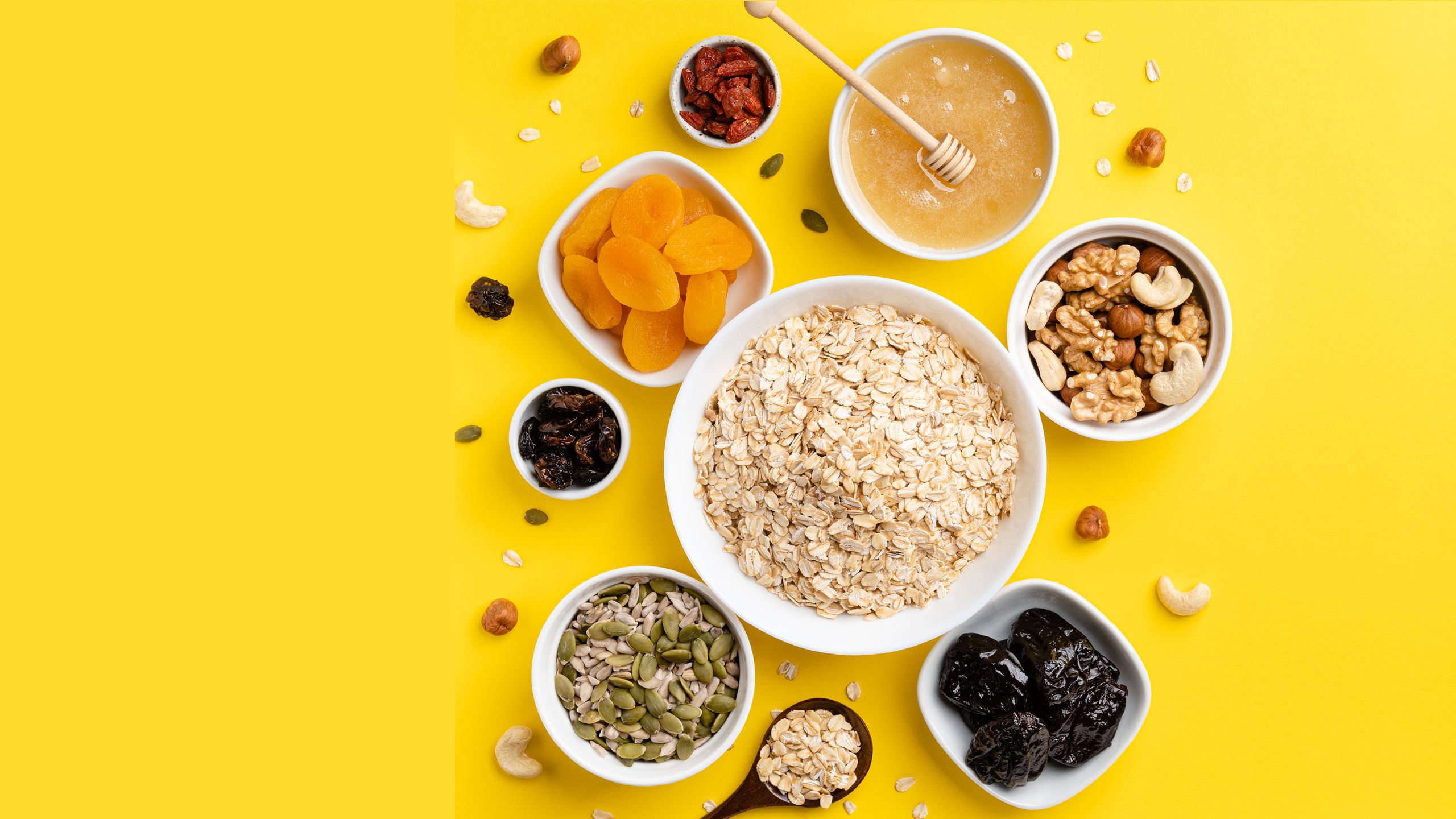
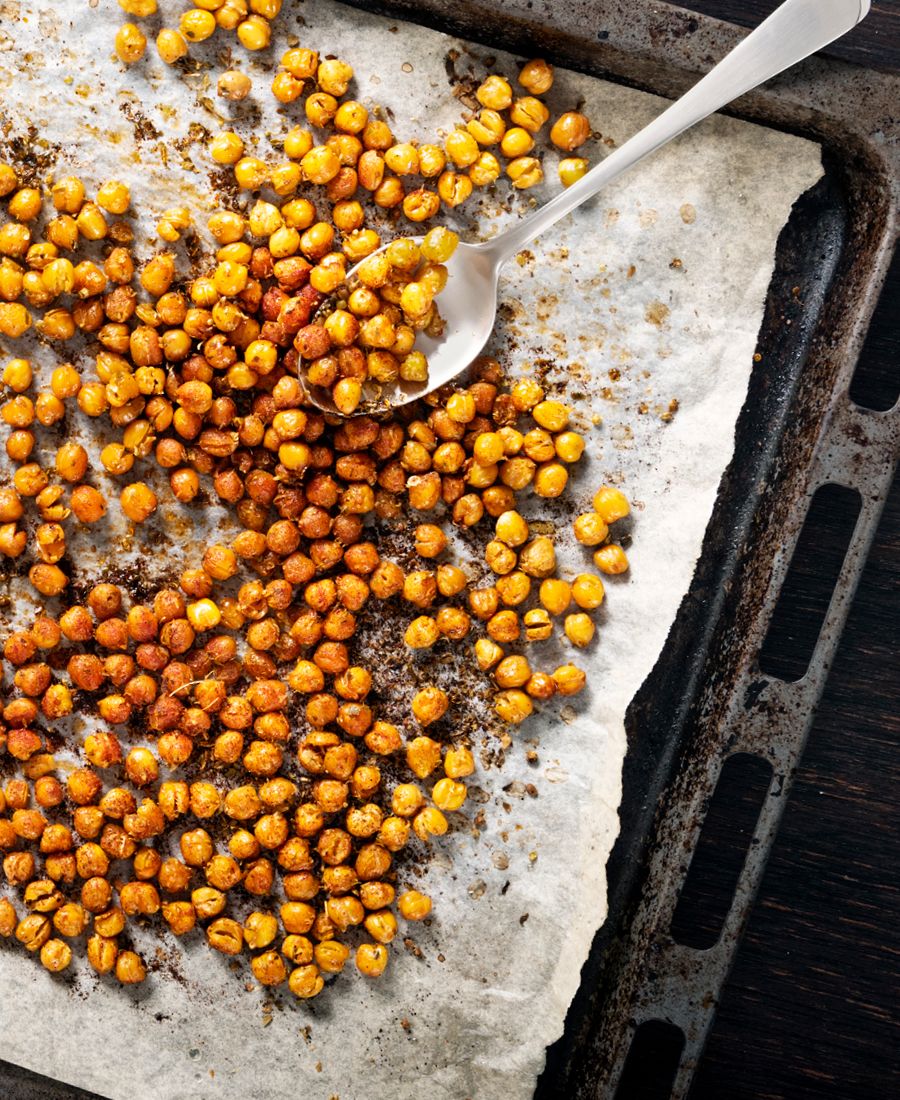
Crispy Chickpea Snacks
Preheat oven to 400 degrees. Drain and rinse a can of chickpeas, then pat dry between two clean dish towels. Toss with olive oil, arrange in a single layer on a baking sheet and roast 20 to 30 minutes, until golden brown. Toss with seasonings of your choice (like any combo of garlic powder, dried dill, rosemary, cumin, chili powder, etc.), and enjoy!
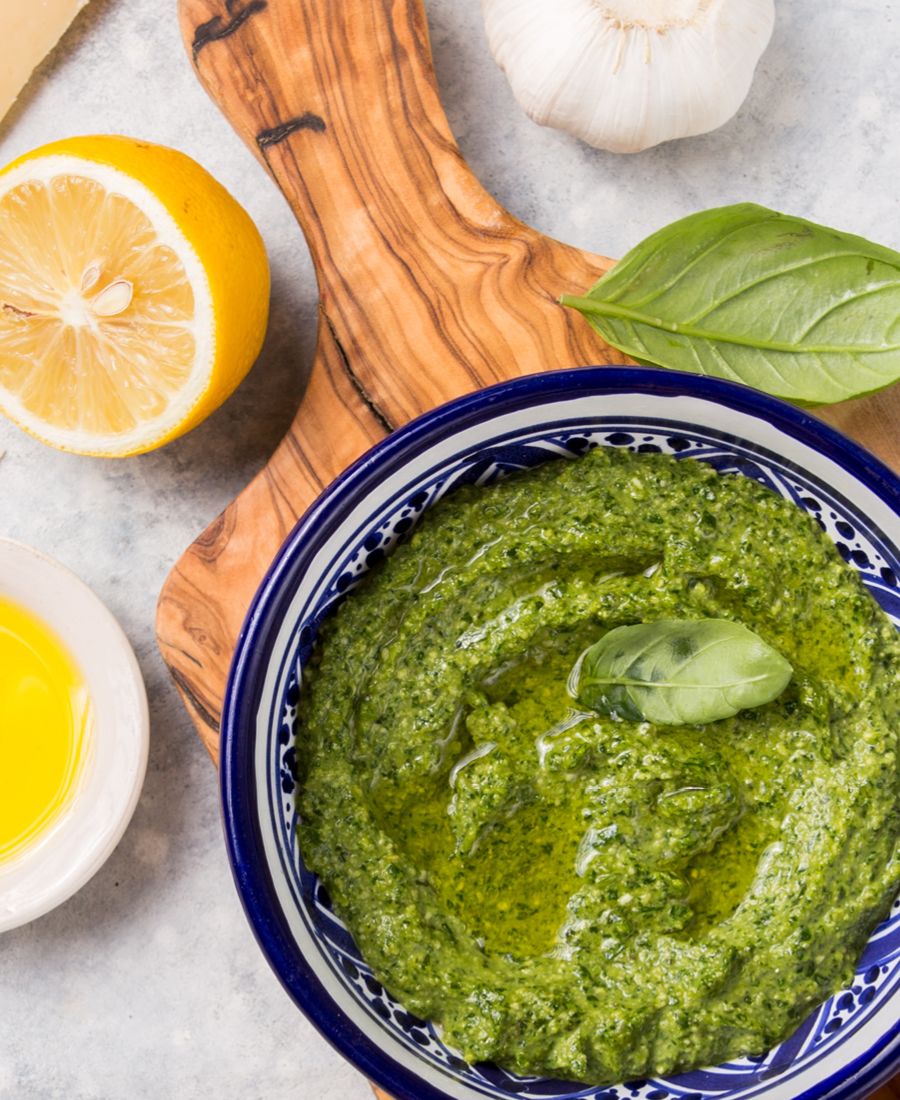
Dried Herb Pesto
Combine 1/2 cup dried basil, 1/2 cup dried parsley, 1/4 cup walnuts, 1/4 cup pine nuts, 1/4 cup olive oil, 2 cloves garlic and salt and pepper to taste in a food processor. Pulse until smooth. Use as a dip for veggies, a dressing for fish or as a sauce for pasta or rice.
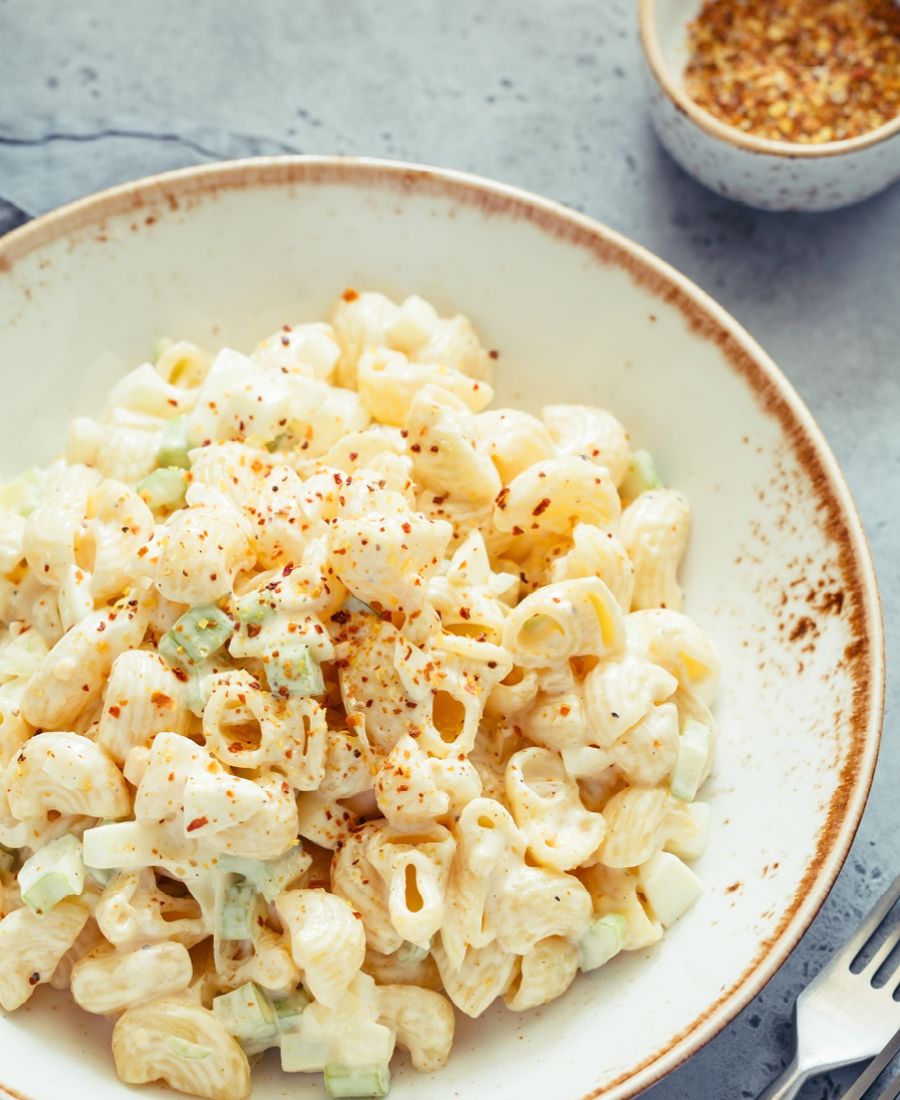
Tuna-Macaroni
Chopped Salad
Cook and drain a box of elbow macaroni (use whole-wheat or chickpea pasta, if you have on hand). Add a can of tuna (drained), 2 stalks chopped celery, 1/2 cup chopped onion, 1/2 cup chopped red pepper, 1 chopped hard-boiled egg and the juice of 1 lemon. Combine 1/2 cup non-fat Greek yogurt and 1/2 cup reduced-fat mayo. Use to dress the salad, and season to taste.
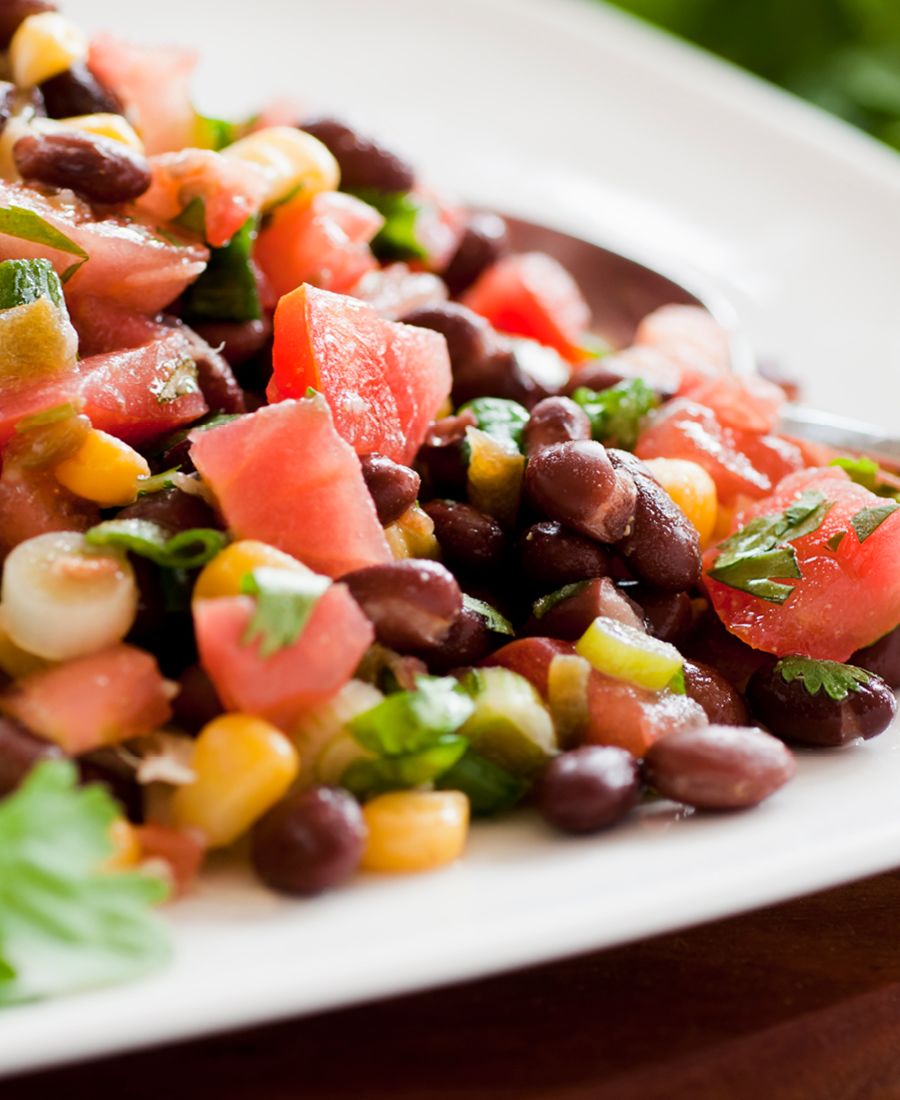
Tangy Texas Caviar
Combine a can of corn, black-eyed peas and black beans (all drained and rinsed) in a large bowl. Add chopped celery, onion and red pepper, a diced tomato and avocado, and 3 Tbs. chopped cilantro. Season with salt and pepper to taste, and dress with the juice of one lime and olive oil.
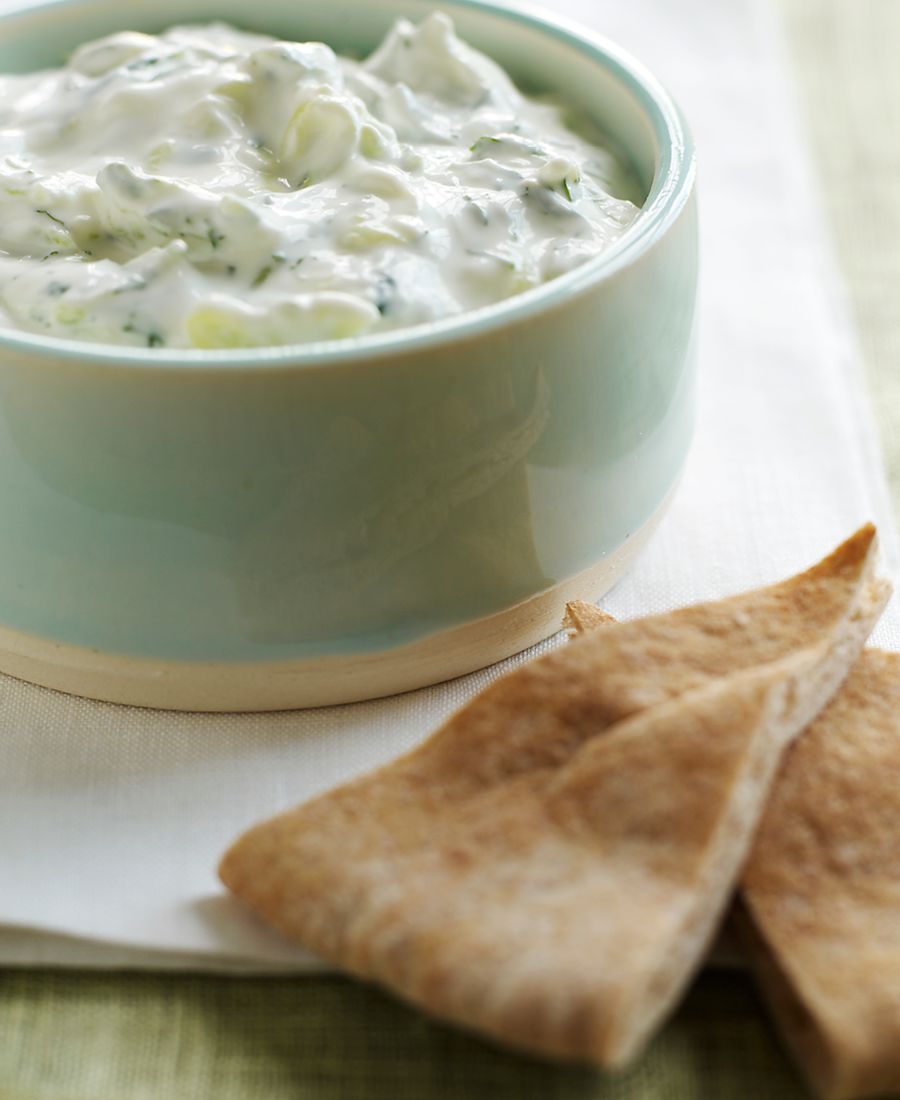
Creamy Cannellini Dip
Drain and rinse a can of cannellini beans. Add to food processor with 1/4 cup olive oil, 2 cloves garlic, 1 tsp. dried rosemary and salt and pepper to taste. Pulse until mixture is coarse. Eat with whole-grain pita.
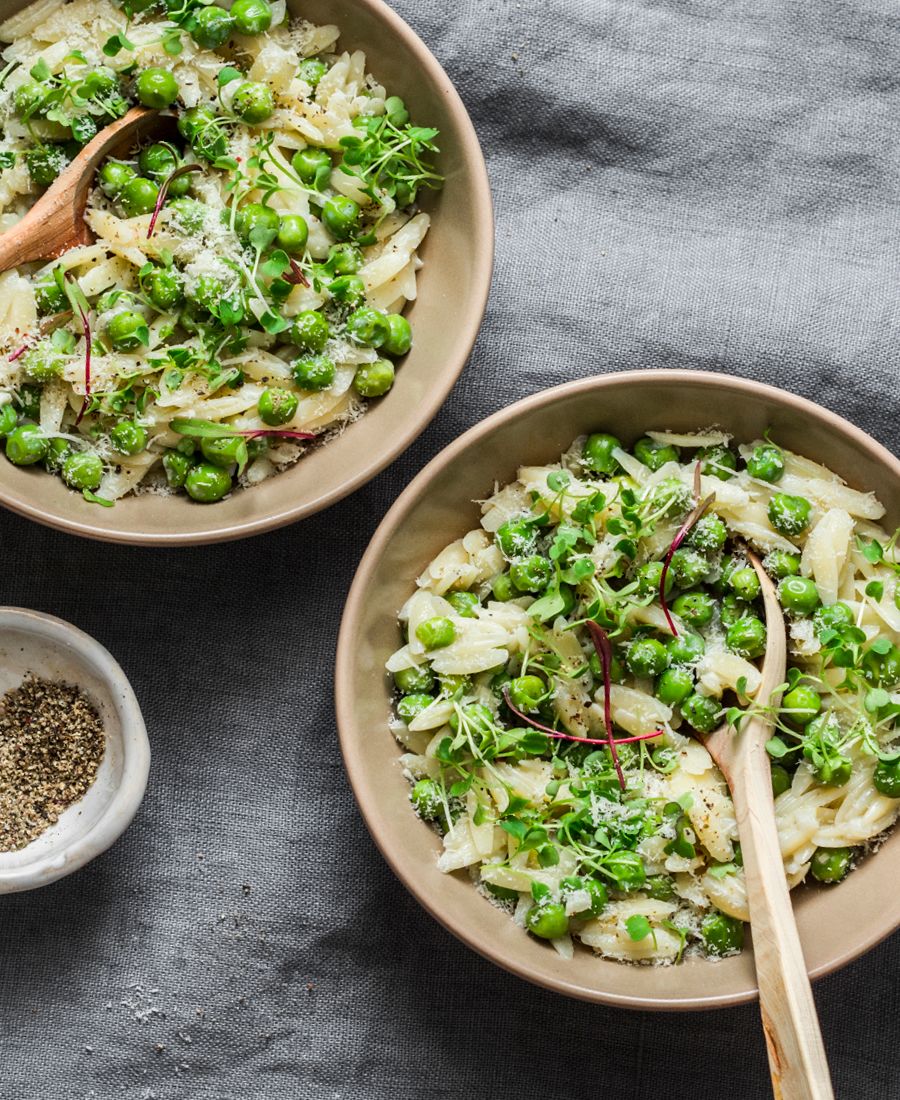
Green Peas Pasta
Bring 2 quarts of low-sodium chicken or vegetable broth to a simmer; add 1 1/2 cups orzo and 1 10-oz. bag frozen peas. When orzo is tender, serve with a dollop of fat-free ricotta and a swirl of olive oil.
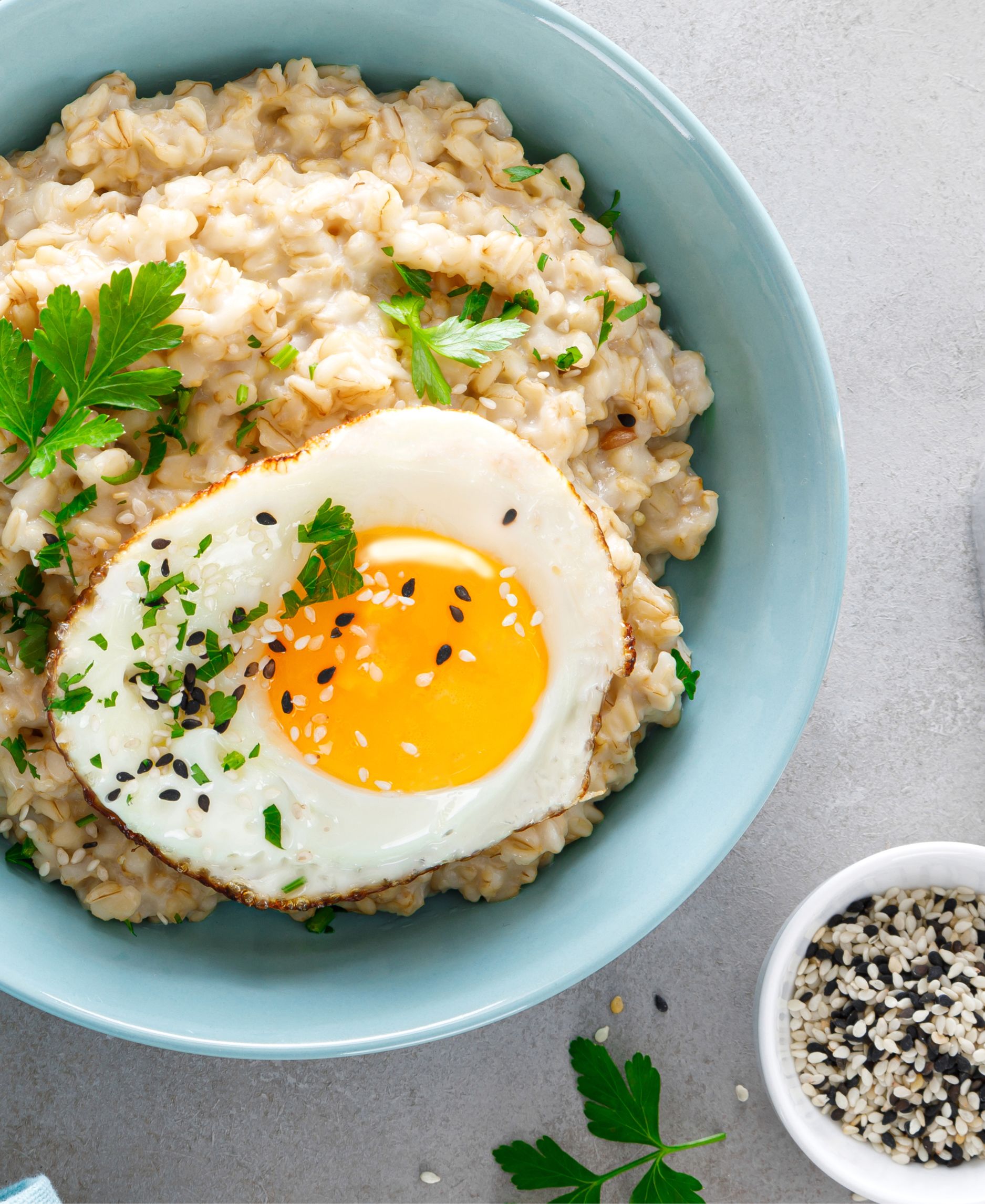
Sunny Savory Oatmeal
Instead of sweetening your oatmeal, add a little olive oil, rosemary and a dash of salt and pepper. Top with a fried egg and fresh greens, like baby spinach or arugula.
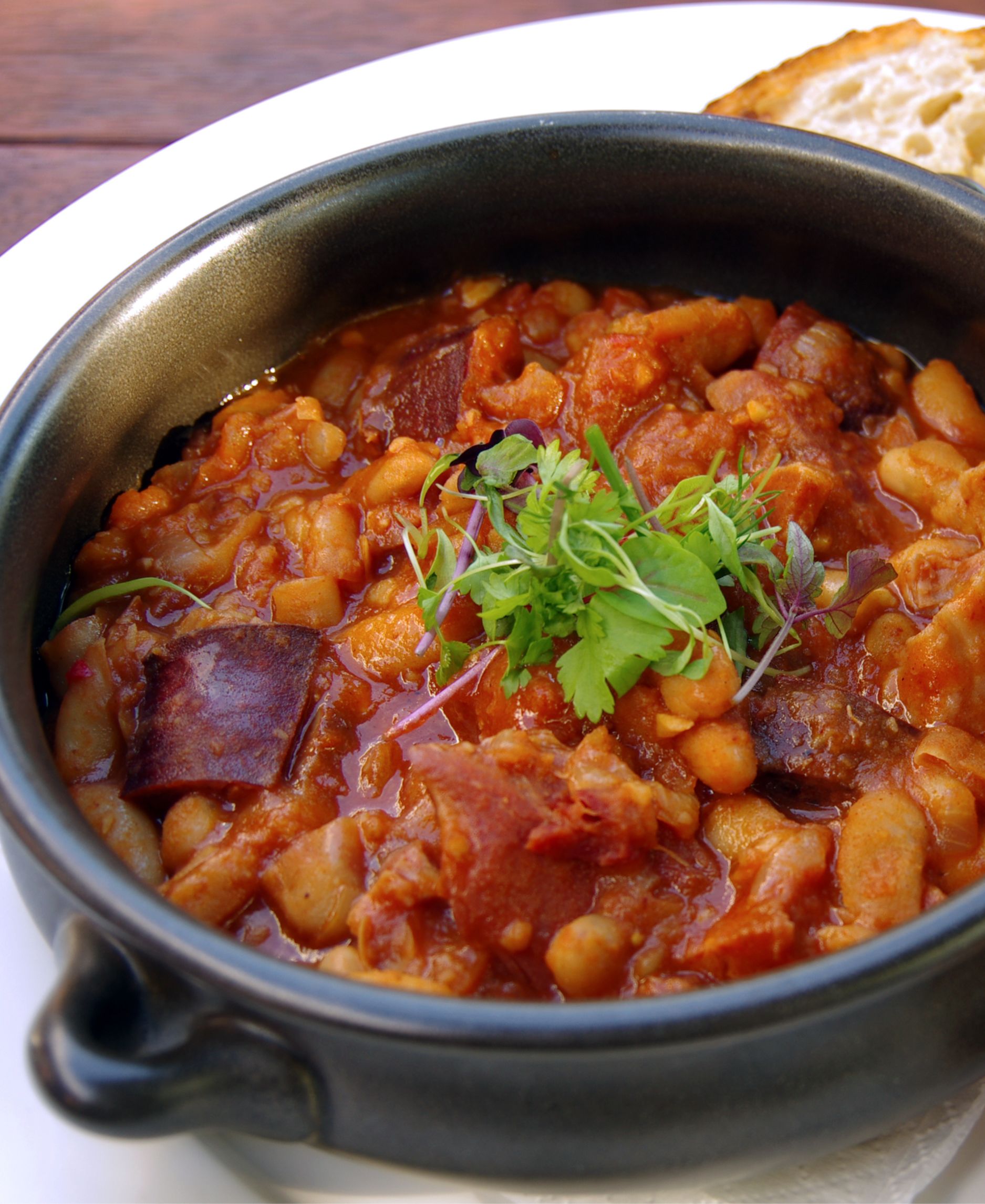
Turkey Baked Beans
Heat a few tablespoons of olive oil in a medium saucepot and sauté one chopped onion and 2 cloves garlic on low heat until onion is translucent. Add a pound of ground turkey; stir until meat is cooked through. Add a can of navy beans (drained and rinsed), 1 cup water, 1/2 cup ketchup, 1/2 cup molasses, 1 tsp mustard and season to taste. Bring to a boil, then reduce heat to medium. Cook about 5-8 minutes, until thickened. Garnish with chopped chives.

Pantry checklist
- Canned and dried beans and legumes
- Canned corn, no salt or sugar added
- Canned tomatoes and tomato paste (unseasoned)
- Canned unsweetened fruit
- Unsweetened applesauce
- Frozen vegetables, plain
- Canned tuna and salmon
- Dried fruit
- Dried herbs and spices
- Dried pasta (don’t forget whole-wheat varieties and those made from chickpeas)
- Whole grains, such as brown rice, farro, quinoa and couscous
- Oatmeal
- Low-sodium boxed broth
- Unsalted nuts
- Peanut and other nut butters
- Reduced-fat mayonnaise
- Oil, such as olive, canola, safflower, vegetable and peanut
- Vinegar
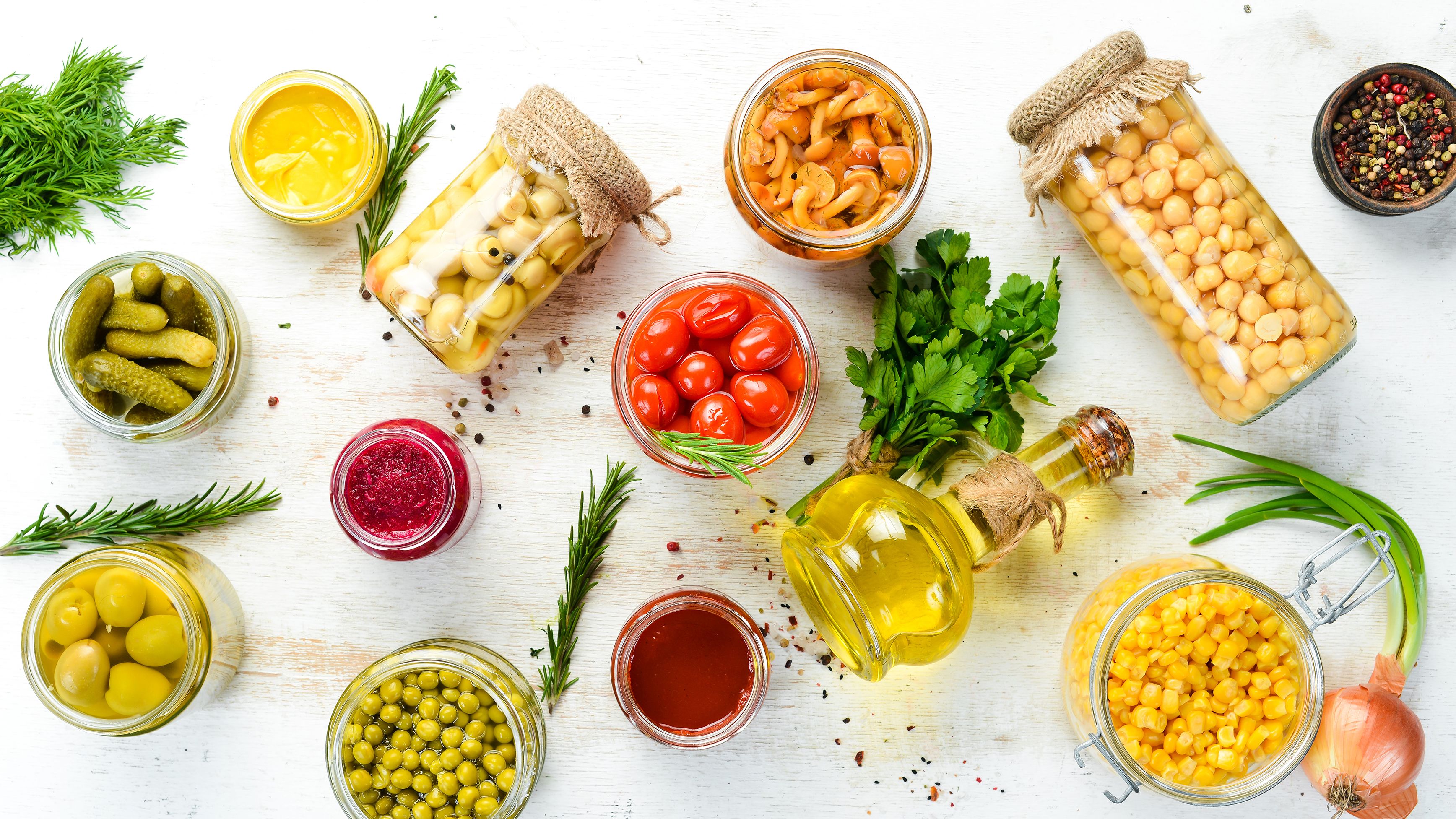
Get your moves on—
for next to nothing!

The good news is you don’t need to leave home, spend big bucks or buy special gear to work out! Check out these apps (and more) to find the fitness routine that suits your fancy. And don’t forget to clear any new exercise routine with your healthcare provider.

Don’t want to get out of bed?
Try… Yoga Wake Up
Apple download link
Android download link
Forget an annoying alarm! Instead, get your blood flowing in the morning with a 5-, 10- or 15- minute audio-guided yoga sequence you do right in bed. It’s customizable according to your level, body type and even your musical preferences. And the yoga teachers come from around the globe. Prefer to meditate? You can opt for that, too.
Note: Free to download. First two wakeups free, after which you may choose from several subscription plans.

Crave a community? Try…
Map My Fitness by Under Armour
If you’re motivated by others, enjoy swapping notes and like friendly competition, you might want to consider this app, which lets you interact with others, join challenges, give and receive encouragement and more. You can pick and choose from more than 800 workouts designed by Under Armour trainers to create a routine that works for you.

Age 65+? Try…
If you’re on a Medicare plan, you may be able to join Silver Sneakers for free. (Check your eligibility at tools.silversneakers.com.) The perks? Access to hundreds of fitness and wellness videos designed specifically for seniors; discounts on everything from nutritionists to fitness equipment; and when it’s safe to go to the gym, your Silver Sneakers membership will entitle you to free classes at participating locations nationwide.

Love to dance? Try…
Every day at noon and 6 PM you can livestream a free dance cardio workout, courtesy of 305 Fitness, a dance class with studios in NY, DC, Boston and other pop-up locations. Or you can check out their dance workouts on YouTube and play on demand. Hosted by DJs, the sessions are fun and party-like—and let you shake your booty without shame!

Have kids? Try…
Grab the little ones (or your grandkids) for an at-home gym session with Joe Wicks—a.k.a. “The Body Coach.” Each morning at 9 AM, he hosts a free, live fitness routine aimed at kids and swears that grown-ups will have a blast, too! Stream it on YouTube from P.E. with Joe, and if you miss it live, you can catch it on demand. And when the kids are out of sight, check out Body Coach TV, also on YouTube, for free weekly workouts for adults.
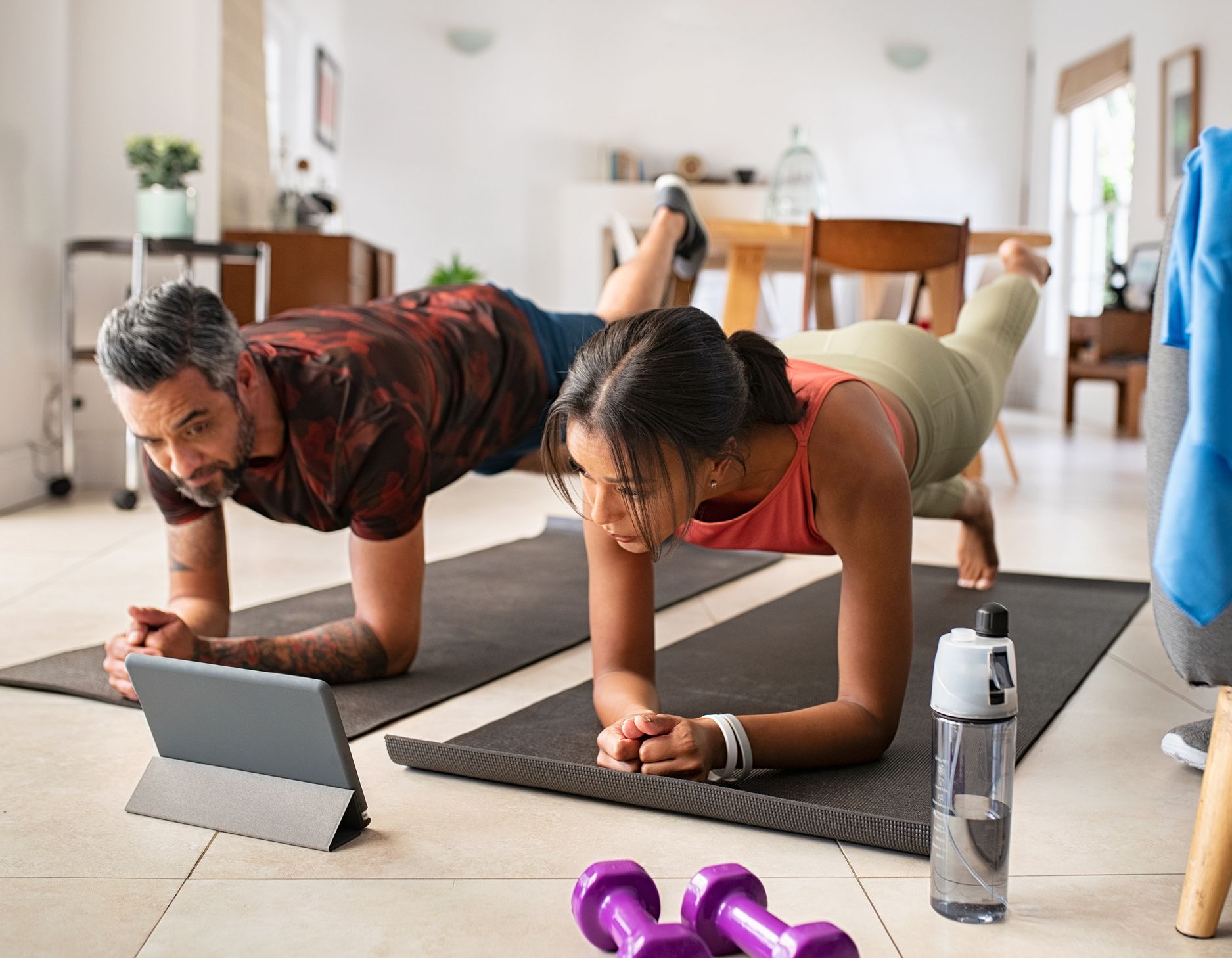
Short on time? Try…
7 Minute Workout by C25K
Apple download link
Android download link
This app gives you instant access to the seven-minute workout developed by the American College of Sports Medicine, and all you need is a chair and a wall to do the exercises that rely on your body weight. Think squats, lunges, wall sits, planks, sit-ups, pushups and more. You do each move for 30 seconds with a 10-second rest period in between.
Note: Free to download; gain access to seven different variations for $0.99

Special thanks to our medical reviewer:
Roger S. Blumenthal, MD,
The Kenneth Jay Pollin Professor of Cardiology; Director, Ciccarone Center for the Prevention of Heart Disease
Maria Lissandrello, Senior Vice President, Editor-In-Chief; Lori Murray, Associate Vice President, Executive Editor; Lindsay Bosslett, Associate Vice President, Managing Editor; Joana Mangune, Senior Editor; Marissa Purdy, Associate Editor; Erica Kerber, Vice President, Creative Director; Jennifer Webber, Associate Vice President, Associate Creative Director; Ashley Pinck, Associate Art Director; Molly Cristofoletti, Graphic Designer; Kimberly H. Vivas, Vice President, Production and Project Management; Jennie Macko, Senior Production and Project Manager; Taylor Wexler, Director, Alliances & Partnerships
Dawn Vezirian, Vice President, Financial Planning and Analysis; Donna Arduini, Financial Controller; Tricia Tuozzo, Sales Account Manager; Augie Caruso, Executive Vice President, Sales & Key Accounts; Keith Sedlak, Executive Vice President, Chief Growth Officer; Howard Halligan, President, Chief Operating Officer; David M. Paragamian, Chief Executive Officer
Health Monitor Network is the nation’s leading multimedia patient-education company, with websites and publications such as Health Monitor®.
For more information: Health Monitor Network, 11 Philips Parkway, Montvale, NJ 07645; 201-391-1911; healthmonitornetwork.com ©2022 Data Centrum Communications, Inc. Questions? Contact us at customerservice@healthmonitor.com
This publication is not intended to provide advice on personal matters, or to substitute for consultation with a physician.
TCO22
Health Monitor Medical Advisory Board
Michael J. Blaha, MD, Director of Clinical Research, Ciccarone Center for the Prevention of Cardiovascular Disease; Professor of Medicine; Johns Hopkins
Leslie S. Eldeiry, MD, FACE, Clinical Assistant Professor, Part-time, Department of Medicine, Harvard Medical School; Department of Endocrinology, Harvard Vanguard Medical Associates/Atrius Health, Boston, MA; Chair, Diversity, Equity and Inclusion Committee, and Board Member, American Association of Clinical Endocrinology
Angela Golden, DNP, FAANP, Family Nurse Practitoner, former president of the American Association of Nurse Practitioners (AANP)
Mark W. Green, MD, FAAN, Emeritus Director of the Center for Headache and Pain Medicine and Professor of Neurology, Anesthesiology, and Rehabilitation at the Icahn School of Medicine at Mount Sinai
Mark G. Lebwohl, MD, Dean for Clinical Therapeutics, professor and chairman emeritus at Kimberly and Eric J. Waldman Department of Dermatology, Icahn School of Medicine at Mount Sinai, New York
Mary Jane Minkin, MD, FACOG, Clinical professor in the Department of Obstetrics, Gynecology, and Reproductive Sciences at the Yale University School of Medicine
Rachel Pessah-Pollack, MD, FACE, Clinical Associate Professor, Division of Endocrinology, Diabetes & Metabolism, NYU School of Medicine, NYU Langone Health
Julius M. Wilder, MD, PhD, Assistant Professor of Medicine; Chair, Duke Dept of Medicine Diversity, Equity, Inclusion, and Anti-racism Committee; Vice Chair, Duke Dept of Medicine Minority Retention and Recruitment Committee; Co-Director for the Duke CTSI- Community Engaged Research Initiative

